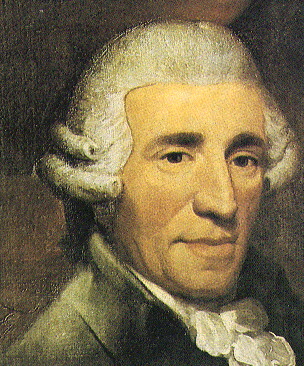 Franc Joseph Haydn
Franc Joseph Haydn Franc Joseph Haydn
Franc Joseph Haydn
In 1772, the Prince stayed at his Hungarian place for several months. Haydn and his musicians were there to entertain at the Prince’s whim. Unfortunately, the musicians were obliged to leave their wives back at home. They were, shall we say, getting a bit edgy. After all, what else was there to do on those cold Hungarian or German nights in a residence that lacked central heating?
Haydn decided to drop a hint to the Prince when he composed his Symphony No. 45 in F-sharp minor, now known as the “Farewell” Symphony. The first three movements are pretty standard. He saved his trick for the closing section. The movement begins at a fast pace, but about halfway through, it changes into a slow movement. At the time it was first played (in an environment without electricity), the music stands were merely illuminiated by candlelight. As the piece ends, the musicians are directed to leave one by one. In Haydn’s time, they would extinguish their candles. The room gradually got softer and darker, until finally there are only two violins left. When they finished the candles were put out and there were no musicians left. Pretty nifty? And Haydn and the musicians got their well-deserved time off.
Let’s hear the end of the piece.
If you need to leave, Go to initial page of site.
If you are interested in advertising a music-related business in the pages of the classroom, please send us an e-mail regarding rates by clicking here.